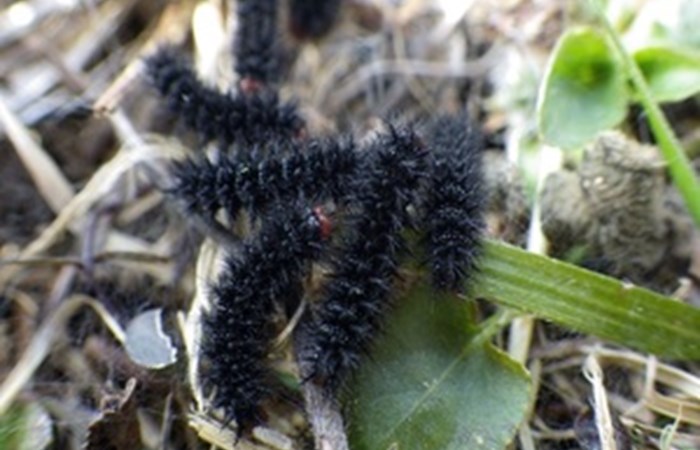Natural England

Some of Englands most rare and threatened species from the large marsh grasshopper, native white-clawed crayfish to lapwings and water voles are to be supercharged on the road to recovery thanks to a multi-million-pound grant scheme.
As many as 63 projects across the country and 5 in Kent and Sussex have been awarded a share of 14.5 million by Natural England to help recover 150 species.
The Species Recovery Programme Grant Scheme supports targeted action to recover our most endangered species. The funding will support efforts to fine tune habitat conditions for our rarest species, and actions such as propagation, captive rearing, translocations, research and solution-trialling to find the best approaches to enable endangered wildlife to survive and thrive.
Englands wildlife is facing extreme pressures habitat fragmentation, climate change and invasive species have created huge declines, with average species abundance falling by 52 per cent. Numbers of the Duke of Burgundy butterfly, for example, have declined by some 50 per cent in the last 20 years.
The National Trust White Cliffs and White Chalk Species Recovery project will support the recovery of specialist flora and fauna in two iconic landscapes, the White Cliffs of Dover and Isle of Wight.The focus is on a diverse range of invertebrates and plants which share a number of similar requirements for targeted chalk and clifftop grassland management. To help achieve this, there will be improved mowing, focussed livestock grazing and scrub management on often difficult terrain.
The flora and fauna species being recovered includes early gentian, oxtongue broomrape, yarrow broomrape, glanville fritillary, potter flower bee, cliff furrow bee, rest harrow, straw belle, white spot, dew footman
Benjamin Thompson, a Natural England team leader in Kent and Sussex, said:
We are excited for this investment into habitat management for these rare species at such an iconic site as the White Cliffs of Dover. Species-rich grassland is one of the rarest, yet one of the most important habitats for biodiversity in England.
Through agri-environment schemes with landowners, the network of species rich grassland in east Kent is growing, providing habitat for many rare and threatened species and we are excited to see this increased support through the Species Recovery Programme.
Robert Sonnen, National Trusts lead ranger for the White Cliffs, said:
This generous grant from Natural Englands Species Recovery Programme will help us to secure the futures of rare flora and insects found at the White Cliffs of Dover and Sandwich Bay.
We plan to survey, monitor and manage unusual species from the tall, yellow-white oxtongue broomrape plant to the tiny, dotted straw belle moth. With the help of a project ecologist and volunteers, we look forward to expanding and fine-tuning our understanding of these and many more fascinating plants and animals that call the clifftop grassland home.
Other projects in Kent and Sussex include:
-
Wildwood Trust: Kentish chough reintroduction aims to re-establish a core population of 20 to 35 chough through the reintroduction of captive-bred birds to the White Cliffs of Dover. This project will build on more than 4 decades of work which has provided suitable habitat to support choughs in Kent.
-
Groundwork South: Increasing the resilience of rare bee species in Hastings to create specialised habitat appropriate to oak mining, tormentil mining, long horned brown-banded carder bees. We will achieve this by creating new areas and improving the diversity of wildflower meadows, improving woodland edge habitat, restoring and planting new hedgerows and making improvements to amenity grassland to increase their scope for foraging.
-
RSPB: Protecting lowland breeding waders to support the recovery of three key lowland breeding wader species, lapwing, redshank and black-tailed godwit, by installing 4 predator-exclusion fences at 3 priority lowland wet grassland sites, including at Higham Marshes.
-
RSPB: terning it up to establish new safe nesting areas for seabirds particularly roseate, common, arctic and little terns within locations around the coast. To create and enhance nesting islands for habitat and predator management, which will act as exemplars to influence wider management across England. Additional work will improve conditions at for other priority species, the marsh mallow moth and medicinal leech at RSPB Dungeness.
The money has been awarded following a competitive application round, and will be used by environmental charities, wildlife organisations, local authorities in projects across the country.
The projects will help deliver the Nature Recovery Network, creating, improving and connecting more wildlife-rich areas benefitting people and helping species to thrive.
The money will also provide new opportunities for people to experience the wellbeing benefits of accessing the natural world, and help build resilience to climate change, while sustaining the vital ecosystems that provide us with healthy soil, clean air and water.
Improving strongholds for wildlife and investing in long-term species recovery will help achieve the Governments pledge to reduce the species extinction by 2042 compared to 2022 levels, restore more than 500,000 hectares of wildlife habitat, and increase species abundance as set out in the Environmental Improvement Plan.
- Further details of the grant scheme can be found on the Natural England blog
Photos are available on a time-limited link here. Alternatively, call the Natural England press office: 0800 141 2743
